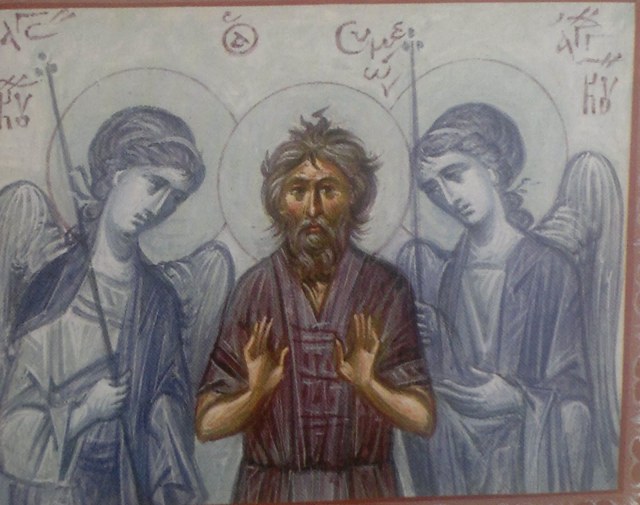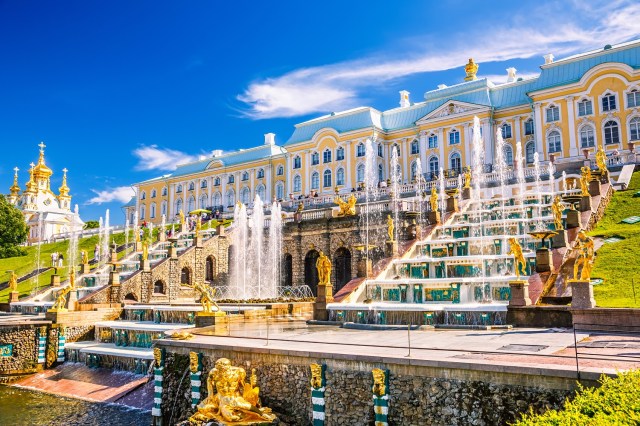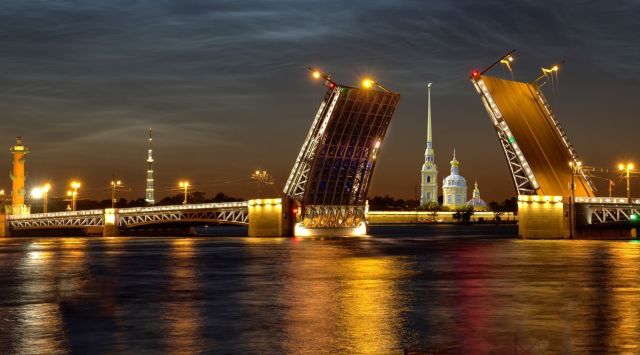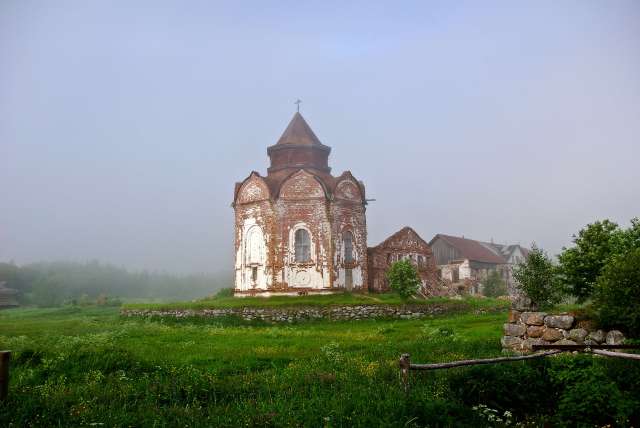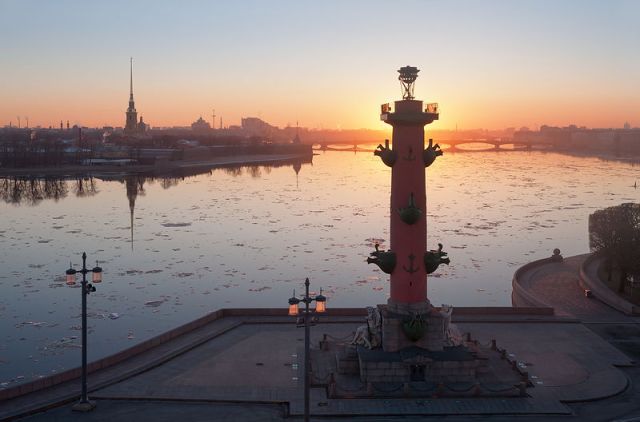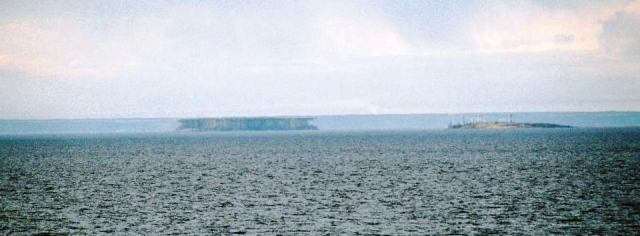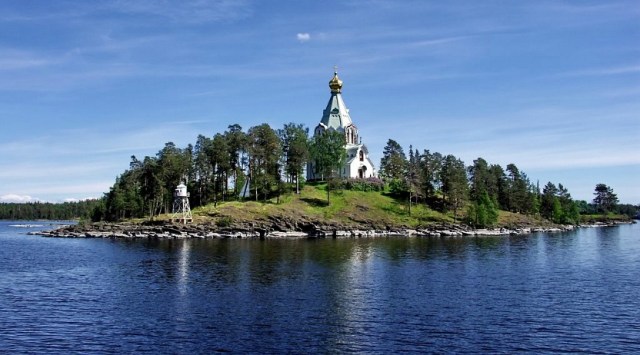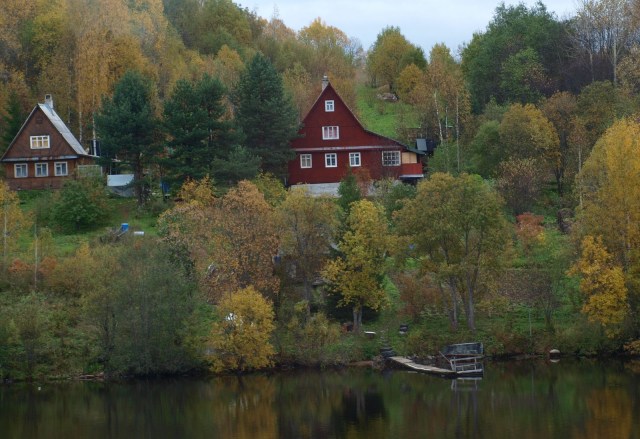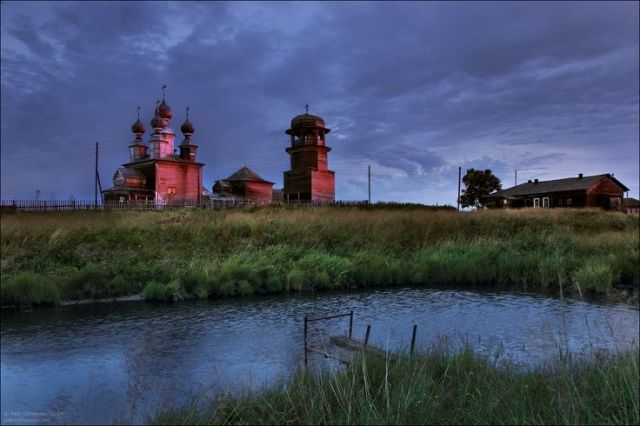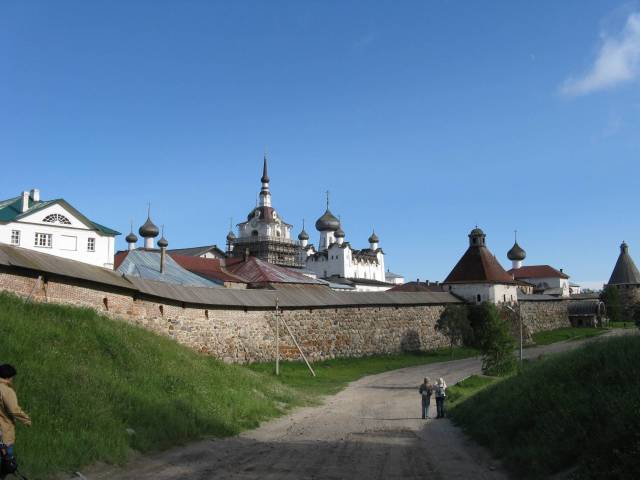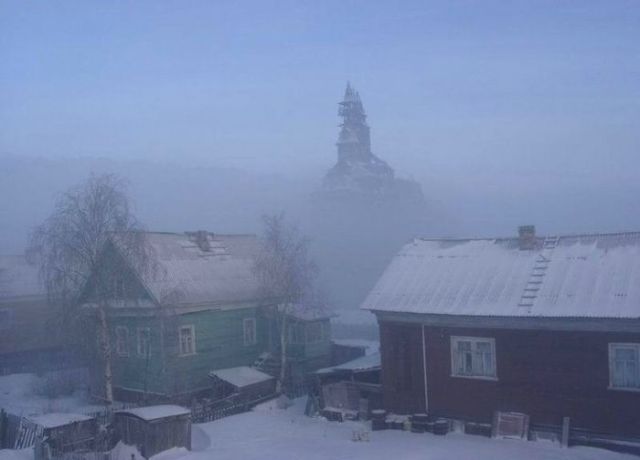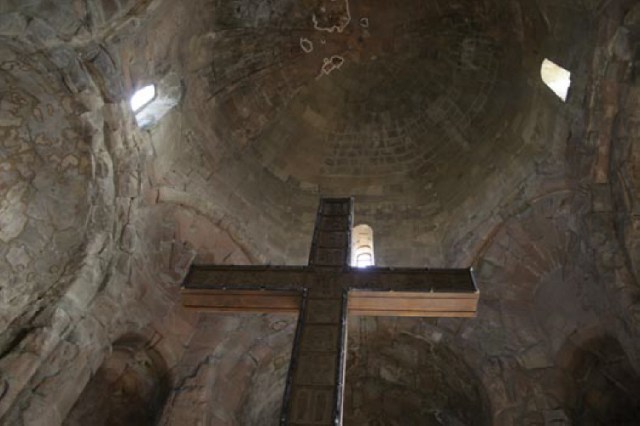
Fourth in her ‘series’ of Cross-related visions, Abbess Thaisia sees a Cross. This is not a dream like the others before, but a vision while awake. Always these visions take place in the midst of heavy trials and tribulations, when she begins to lose heart and starts to languish:
“Once, during the period of labours and sorrows when I was beginning to put the community in good order, I was sitting in my study, all alone. All the doors were closed. Everyone had gone to bed, and I was preparing to do the same–yet I continued to sit there–I don’t know why. I was putting off going to sleep. I was not praying, nor was I thinking of anything special. There was something heavy on my heart, something very heavy, and there was silence in my heart and soul. Suddenly, in the middle of my cell, I saw a large wooden cross standing on the floor, so large that it almost reached the ceiling. (Evidently this was not a dream, for I was awake–I was just sitting, conscious of everything around me.) At the place where the horizontal and vertical beams met, there was something like a bloody, red, oblong fastening. seeing the cross, I did not become afraid; I crossed myself, and involuntarily thought, ‘How large it is! How will I be able to carry it?’ Then I heard these words, as if coming from the cross itself: ‘You will lift it and carry it, for My strength is made perfect in weakness!’
I considered that this was sent either to strengthen me in my sorrowful life, or to warn me of still greater sorrows to come. Although I felt some sadness, I accepted this with equanimity. I was ready to endure any suffering for the good of the community, and, through it, for the glorifying of the Name of God.”
*
For Abbess Thaisia’ first vision, go to The Cross-Baptism
For her second vision, go to The Fool-For-Christ and the Cross
Finally, for her third vision, go to Martyrdom Before the Crucifix

